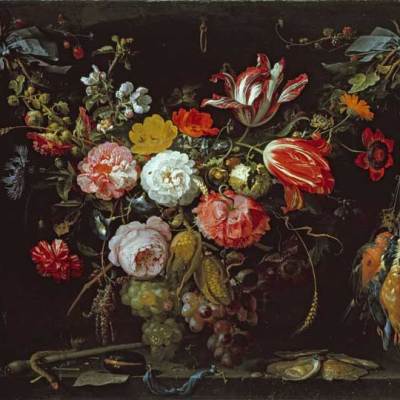‘Titian and the Golden Age of Venetian Art’ opens at the Scottish National Gallery on Saturday (22 March). We asked the curator, Aidan Weston-Lewis, about the origins of the exhibition, and what to expect.
Can you tell us a bit about the exhibition?
The exhibition showcases the two outstanding mythological masterpieces by Titian, Diana and Actaeon and Diana and Callisto, acquired jointly by the Scottish National Gallery and the National Gallery in London in 2009 and 2012 respectively. It features an outstanding group of 16th-century Venetian paintings, drawings and prints from the Scottish National Gallery’s collection (including the Bridgewater Collection), plus one major additional Titian loan.
What makes this a distinctive show?
Although many of the paintings in the exhibition form part of our permanent display, the exhibition offers a great deal of ‘added value’ in a number of ways: the space itself has been transformed and the paintings rearranged according to theme rather than date; there is more historical context; more information about individual works; comparative illustrations incorporated into the wall texts; and some technical information and reconstructions. Together these offer visitors deeper insights into the works and the culture which created them.
How did you come to curate this exhibition?
I have been curator of Italian and Spanish art here for over 20 years, so this show fell squarely within my remit.
What is likely to be the highlight of the exhibition?
Apart from the two Diana paintings themselves, the stellar work for many people will be Titian’s Death of Actaeon, generously lent by the National Gallery in London. It has never before been seen in Scotland, and indeed, has never been lent anywhere since its acquisition by the National Gallery in 1972. It was intended as part of the same series as the two Diana paintings, but Titian never finished it.
And what’s been the most exciting personal discovery for you?
It predated the show by a few years, but it must be the identification and purchase for the gallery of a previously unrecognised drawing by Titian – for a fraction of its real value.
What’s the greatest challenge you’ve faced in preparing this exhibition?
To transform the physical space and re-present many familiar works in a way that will hopefully be fresh and distinctively different for our visitors.
How are you using the gallery space? What challenges will the hang/installation pose?
The hang itself is fairly straightforward, although we have allowed more space around individual works to allow more detailed interpretation. The main design feature of the show is the riskiest one: we are installing two large ‘gateways’ at the exhibition’s entrance and exit with designs modelled on 16th-century Sansovino-type picture frames, complete with lion of St Mark keystones. Could verge on kitsch!
Which other works would you have liked to have included?
In an ideal world, the other four of the original six Titian poesie painted for Philip II of Spain. But this reunion is unlikely ever to take place anywhere, as two of the owning institutions – the Wallace Collection in London and the Isabella Stewart Gardner Museum in Boston – do not lend.
‘Titian and the Golden Age of Venetian Art’ is at the Scottish National Gallery from 22 March–14 September.





